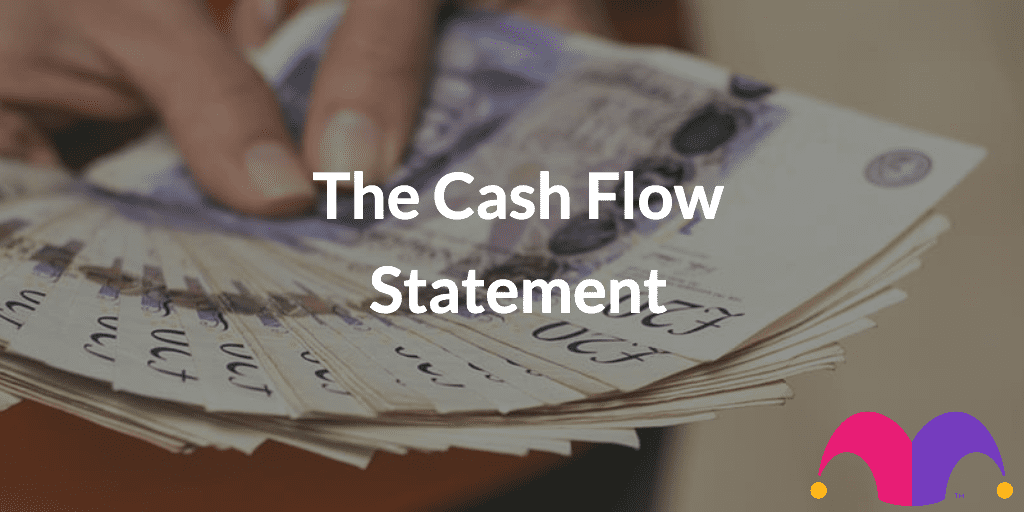Profits and losses don’t tell the whole story by a long way, as they are not the same things as cash inflows and outflows — with credit arrangements, a company can carry on quite a bit of business without a penny changing hands, and actual exchanges of cash often don’t happen in the same period in which the associated profit or loss is recorded.
Cash Flow Statement
What the Cash Flow Statement shows, on the other hand, is the amount of cash and cash equivalents that actually come in and go out in the period. So it will include all cash brought in from sales, but will not include sales made on credit that have not yet been paid for. Similarly, it will not show raw materials and other things that have been bought on credit but not yet paid for.
In all, there are three main categories of cash flows that we will see in a Cash Flow Statement.
Operations
The main cash flows are those from ordinary operations, and the first line we should expect to see is a cash-adjusted figure corresponding to the company’s profit before tax — that is, the equivalent of the profit figure from the income statement, but adjusted for all items that were recorded but not paid for in the period.
That figure will include some items that were recorded as profit in the preceding period but which did not appear as cash in that period as they had not been paid at the time — if they’ve since been paid, they’ll appear in this period’s cash flow, though not in this period’s profits. Similarly, for expenses recorded in this period which have not yet been paid, we’ll normally expect those to show up in the following period’s cash flows (assuming they get paid then).
We’ll often see depreciation and amortisation included in the breakdown of operating cash flow, which might sound strange, as they don’t involve any actual cash. The reason they’re included is because the initial cash-flow from operating activities, which, remember, has been arrived at by adjusting the profit figure from the income statement, actually also contains deductions for depreciation and amortisation so as to offset the cost of depreciating assets against profits over their lifetimes — they are items that reduce the stated profits, even if they don’t affect cash flow.
So what the cash flow statement is actually doing is adding those items back when calculating the net cash flow, because in cash terms they shouldn’t be deducted in the first place. Perhaps a useful way to think of it is that cash flow is lumpy, with cash going out as and when big-ticket long-term assets need to be bought, but profits are smoothed by depreciating such things over their lifetimes, as it would skew the business performance if long-term asset costs came out of a single period’s profits.
After all operating cash flows are accounted for, tax will then be shown as a cash outflow, leading to the net cash flow from operating activities.
Investing
When a company finally disposes of an asset or invests in a new one, that’s the time they will show on the cash flow statement. Proceeds from disposals, costs of new asset purchases, other things like interest and dividends received from investments and associates — these are all included in the Investing Activities section.
Investing activities will usually add up to a net cash outflow, because for most companies they will be dominated by buying new assets, like machinery or other equipment.
Financing
The final section shows all cash flows associated with financing the company. Dividends paid to shareholders will be shown as cash outflows here, as will loan repayments, leases, share re-purchases, interest paid to bondholders, etc. Against that, we’ll see new capital raised, for example through equity or bond issues, or simply new borrowings from banks, shown as cash inflows.
Unless a company in engaged in raising new financing, we’ll expect to see a net cash outflow in this section, as the company services its existing finance costs. But when a company is expanding and raising new capital, we’ll most likely see a net cash inflow in this section.
What To Look For
The real benefit of examining a company’s cash flows is to check that cash is keeping pace with profits. If a company is making sales but is struggling to get its bills paid, while still paying out cash for its own raw materials and such things, we’ll see falling net cash flows. So if net cash inflow starts lagging behind the net profit figure for a couple of periods, we might start to get a bit concerned.
Looking for more investment ideas?
Identifying the best investment opportunities requires long hours of in-depth research. But having a true ‘edge’ can make all the difference to your portfolio’s returns, especially during a bear market like this one.
That’s why, when it comes to helping to select their next investment, thousands of UK investors turn to Motley Fool Share Advisor. Led by a world-class team of expert investors, The Motley Fool UK’s flagship share-tipping newsletter alerts its members to 2 high-potential, high-conviction UK and US stock recommendations each and every month.
These are the sort of investment opportunities that could help contribute to life-changing scenarios. And right now, you can access ALL of them for just pennies a day.
So if you’re eager to start aiming for better investment returns, then don’t wait another minute… Start your Motley Fool Share Advisor membership — backed by our iron clad 30-Day Subscription Refund Guarantee — TODAY.
[Static_FreeReport]
